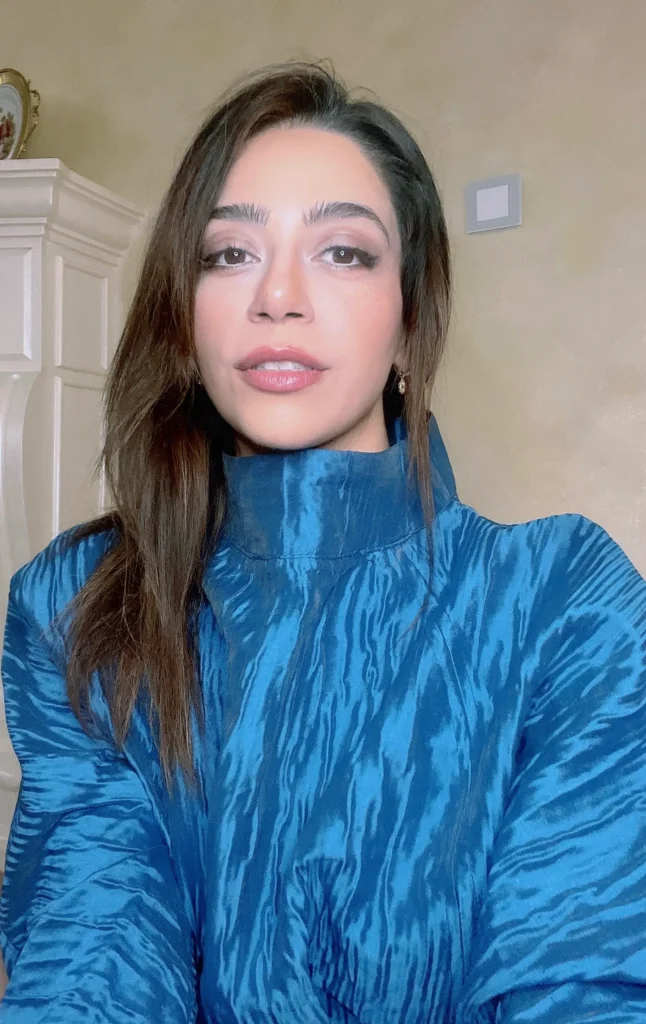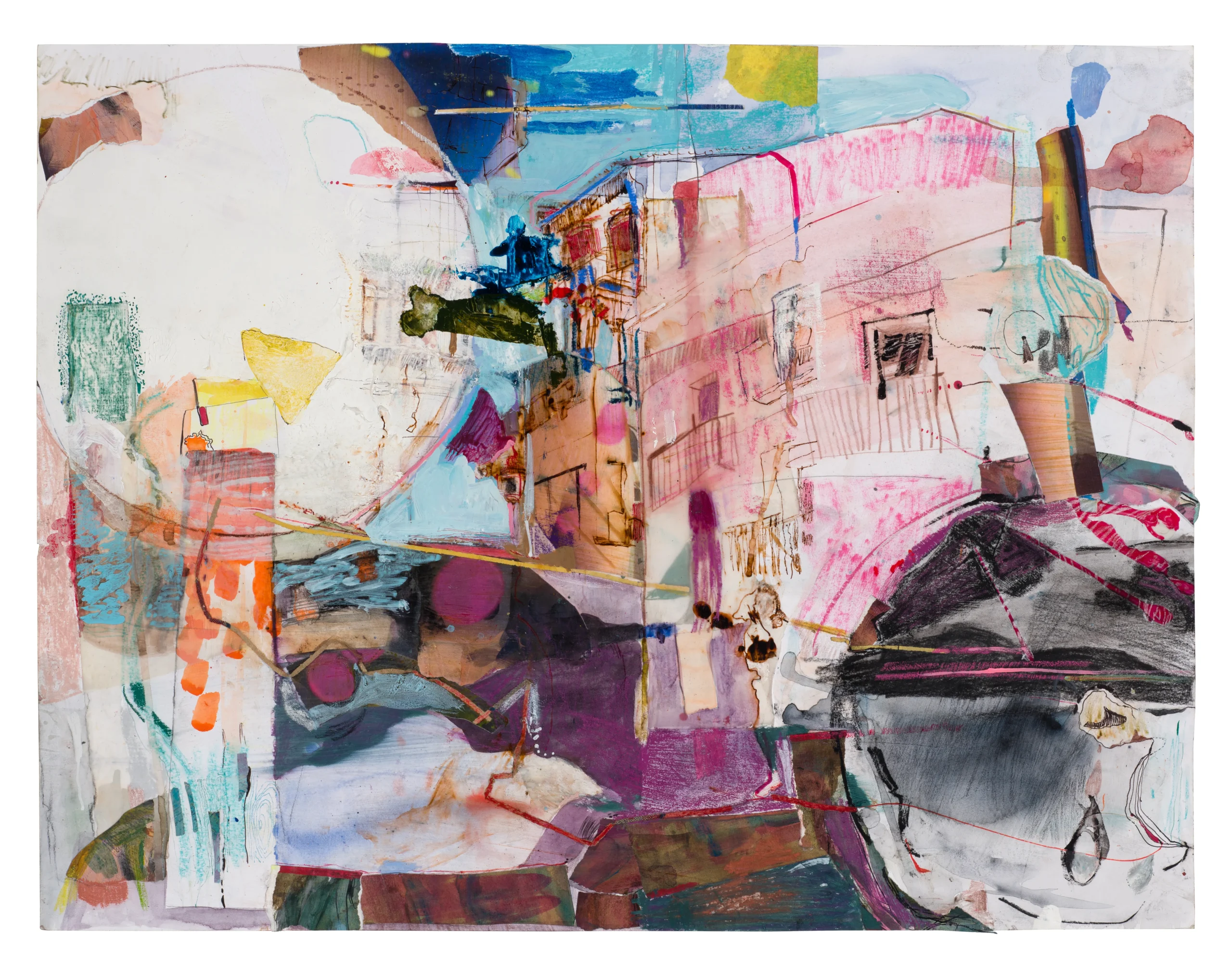Sara Adib, an Iranian artist with a master’s degree from Sorbonne University Paris 1, is renowned for her “Reality Shifting” style, blending vivid colors and abstract forms to create therapeutic art. Her deeply personal work, rooted in emotional processing, has earned international recognition, with her painting Rêvalité selected as the only Iranian piece for the London Art Biennale 2025. Drawing from experiences like the loss of her father, Adib’s art merges reality and imagination, inviting viewers to explore healing through immersive, layered compositions.
Thank you for taking the time to do this interview with Trends despite of your busy schedule; we really appreciate it. Please tell us about yourself, your background, and your journey into art.
My connection with art began at an early age. Through my parents, who had studied in France, I got acquainted with French culture, which deeply influenced my path. I first studied at the Art University of Tehran, where I gained my place amongst nearly 200,000 other applicants. Later, I continued my studies at Beaux Arts de Versailles and earned my master’s degree from Sorbonne University Paris 1 in 2015. Art became my catharsis. By visualizing my innermost thoughts, I began to cope, and then ultimately to control the intricate machinations of my own life. This process of turning personal experiences into art drove me to pursue it professionally.
Your work is deeply personal, often described as a form of art therapy. What inspired you to explore art as a medium for emotional processing and healing? Who has been your biggest inspiration or mentor in your artistic career?
After the loss of my father to cancer in 2018, I began researching the different aspects of art therapy in painting, dancing, and active meditation. I found that the interaction and difference between the psychological aspects of images, the usage of tools, colors, and altering reality to express real emotions, lead to a state of mind where one is completely immersed in creating art. It’s a form of active meditation. Creating a new definition and image for something already formed in our mind does not mean removing the event, but making it a part of a more important whole. This therapeutic process, where I freely use different techniques to overcome the loss of control, has been a cornerstone of my practice. I would also want to thank my professors Bernard Guelton and Ebrahim Jafari, who believed in me; they were my mentors.

Your artistic style is described as “Reality Shifting,” using vivid colors and abstract forms. Can you explain what this term means to you and how it shapes your work?
The subject matters of my works are drawn from the psychological term of “Reality Shifting,” our emotional experiences and fears, along with altering them into an unrealistic space where we can see it exist, but because its nature has changed, it prepares us to face it and accept it. I seek to establish a relationship, a connection between reality—sometimes photographic—and imagination, so that there are no longer boundaries separating them. I’m using color, collage, textures, and so many details to suggest distance and the illusion of three-dimensional space. I include elements to create ambiguous depth, shifting perspective, or movement that can make the viewer’s eye ” travel” through the painting in unexpected ways, suggesting more than a flat surface. My practice uses abstract shapes with sharp colors that remind us of the better moments of life, inviting viewers to traverse imagined landscapes for emotional reckoning and the rediscovery of joy’s resonance.
Your painting Rêvalité is the only Iranian work selected for the London Art Biennale 2025. Can you tell us about this piece and how you were inspired to create it?
My painting, “Rêvalité”, is a mix of two words, “dream” and “reality” in French. This painting is about exploring how my artistic focus lies in “Reality Shifting,”. It is created by abstract, vividly colored forms as well as objective, familiar elements and experiences. That invites viewers to explore alternative realities for emotional processing and the recollection of joy. “Rêvalité” is a visual space where time fractures, memory bleeds, and transformation begins. Through mixed media, I tried to highlight the significance of unexpected outcomes and the transformative power of consciousness. In this process, sometimes I freely use different techniques to overcome the loss of control, both in new artistic techniques and in my life events. I’m using many layers of collage, prints, photos, and textures to express different layers of a story. Each painting is A puzzle that has its own solution. That’s why I never have an etude or pre-drawing for any of them. At the end, I may end up with a completely different picture than what I started with. As with this work, I decided to turn it from horizontal to vertical to see it from a different angle and move on in a different direction, as my life during that period took a different path too, and that was how I decided to cope with it.

What does being an Iranian artist at the London Art Biennale 2025 mean to you, and what significance does participating in this event hold for you?
I’m proud that I showcase my work, which is worth being recognized without any representation of Iranian galleries, but myself. What sets the London Art Biennale apart is its commitment to excellence. Artists are selected solely on the basis of their artwork, without consideration of their career achievements, background, or reputation. The rigorous selection process ensures that the Biennale remains a true celebration of artistic merit, showcasing pieces that reflect the highest standards of creativity and talent. the Biennale offers a unique platform for emerging and established artists to present their work on an international stage, allowing visitors to experience the vast richness of global contemporary art.
What are your future plans as an artist, and are there new projects or exhibitions you are excited to explore?
My future as an artist is centered on deepening my exploration of three-dimensional space in a two-dimensional space through new mediums. My vision is to continue pushing the boundaries of dreamality to create a better image of how our world should be. The world often feels disconnected, with many people feeling isolated, even in a crowd. Empathy, real connections, and systems that allow people to help each other emotionally are vital for fostering a sense of belonging and support. When people feel understood and seen, it can make a world of difference in how they navigate their struggles. I’m incredibly excited about my upcoming series, “ A Pathless Land,” to create immersive experiences. I’m also actively pursuing opportunities for a solo exhibition next year, which will allow me to fully realize this vision and share it with a wider audience.”
What words of advice or wisdom would you share with aspiring artists looking to find their voice and navigate their creative journey?
I am an artist with 35 years of experience in painting and works of art, and also an art degree from one of the best universities in the world, but I did not have an exhibition only for personal reasons and issues. What I know is that if I had waited for the gallery’s approval in my country to have an exhibition to promote my work, I would never have been selected for one of the UK’s most respected international art events. I entered this challenge due to frustration with the system and the artistic atmosphere in March 2025, and this was the first art challenge I participated in!
“In a world where the art market is a bubble, it’s going to be a tough challenge, especially for Iranian artists, and art’s bright flame might dim, but please, don’t let yourself be tied to galleries that don’t give a chance to real talents! Don’t wait for approval from a limited number of people. You have to find your way out of this cycle of repetition, because the voice of art is louder than the market! I was lucky enough to have three masters in my years of study, and the very first thing I learned is that the greater people are, the more humble they are. Professional people will help you selflessly because they are compassionate and concerned; they don’t extinguish the true meaning of art and hope in the eyes of talented young artists only because they are young. Instead, they become a light on a dark path.”






